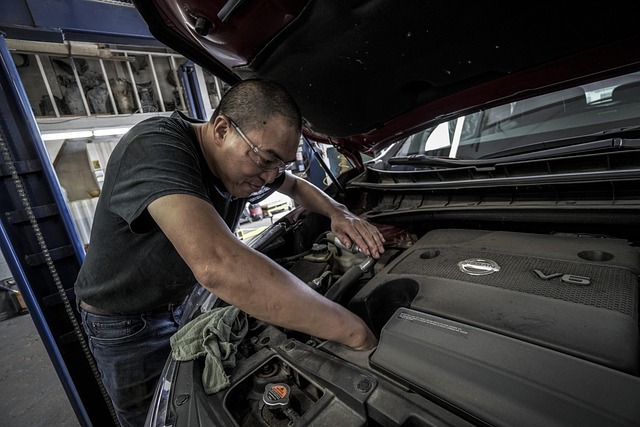The UK market demands stringent maintenance documentation compliance, driven by legal requirements and strategic considerations impacting product safety, brand reputation, and customer satisfaction. Proper localization of service manuals, repair guides, and warranty information is crucial due to the country's linguistic diversity. Investing in high-quality translation services for UK Maintenance and Service Manuals ensures accuracy, consistency, and compliance across diverse industries. Expert translators with industry knowledge and adherence to best practices like ISO standards are essential to prevent safety hazards, enhance customer satisfaction, and drive global business success.
In the fast-paced, globalized world of machinery and equipment maintenance, ensuring clear, accurate documentation is paramount. For UK-based organizations, proper localization of service manuals and maintenance guides isn’t just a compliance issue—it’s a key to safe, efficient operations. The problem lies in the potential for misinterpretation and safety risks when technical information is not seamlessly accessible in local languages. However, leveraging professional translation services specialized in UK Maintenance and Service Manuals offers a robust solution, guaranteeing that critical instructions reach every worker, everywhere they operate.
- Understanding UK Maintenance Documentation Requirements
- The Impact of Proper Localization on Service Manuals
- Choosing Translation Services for Technical Texts
- Ensuring Accuracy in Machine and Equipment Translations
- Localizing Digital Content: Best Practices for Service Manuals
- Case Studies: Successful Localization Projects for UK Companies
Understanding UK Maintenance Documentation Requirements

The UK market, with its distinct legal and regulatory framework, imposes stringent requirements on maintenance documentation for products sold within its borders. Ensuring compliance is not merely a legal obligation but also a strategic decision that can impact product safety, brand reputation, and customer satisfaction. At the heart of this process lies a critical yet often overlooked aspect: proper localization of maintenance documents. This involves translating service manuals, repair guides, and warranty information into languages relevant to the UK market, reflecting the linguistic diversity within its population.
For instance, consider a manufacturing company that supplies heavy machinery across Europe. While their initial documentation might be in English, complying with UK regulations necessitates professional translation services for UK Maintenance and Service Manuals to ensure accessibility for non-English speaking technicians and service providers. This is not just about words on paper; it’s about facilitating efficient maintenance, preventing errors, and ensuring the safety of users. Translation quality must adhere to ISO standards, reflecting accuracy, clarity, and consistency in technical terminology.
Data from a recent survey by the British Translators’ Association (BTA) highlights the growing demand for specialized technical translation services, particularly within the manufacturing and automotive sectors. The study revealed that nearly 80% of UK-based businesses reported increased needs for localization services, with maintenance documentation topping the list. This trend underscores the importance of integrating translation services into product lifecycle management strategies, ensuring that every aspect of a product’s lifespan is covered in languages that matter to the UK market.
The Impact of Proper Localization on Service Manuals

The proper localization of UK maintenance documentation, especially service manuals, is a critical yet often overlooked aspect of effective communication within the UK market. In an increasingly globalized industry, ensuring these manuals are accurately translated and adapted to local standards can significantly impact technical support, customer satisfaction, and safety. Service manuals, being the backbone of equipment maintenance across various sectors, require meticulous attention to detail during localization processes.
Proper localization goes beyond mere translation services for UK Maintenance and Service Manuals; it involves understanding the cultural nuances, legal requirements, and specific terminology used within the UK. For instance, electrical engineering terms might vary slightly between countries, and certain safety protocols have distinct regulations in different regions. Professional translation services should account for these variations to ensure manuals remain reliable and compliant. A study by the Globalization and Localization Association (GLO) revealed that localized documentation can increase customer satisfaction rates by up to 25%, highlighting its direct impact on business success.
The benefits of well-localized service manuals are far-reaching. For technical support teams, it means faster issue resolution as they navigate equipment with accurate local references. Customers benefit from clearer instructions and better access to after-sales support. In critical sectors like healthcare or aviation, where precision is paramount, localized manuals can be a matter of safety. Therefore, investing in high-quality translation services for service manuals is not just a recommendation; it’s an essential practice to maintain quality, consistency, and compliance across the UK market.
Choosing Translation Services for Technical Texts

In the realm of UK maintenance documentation, proper localization is paramount to ensure effective communication and flawless implementation. When dealing with technical texts such as service manuals and repair guides, choosing the right translation services becomes a critical decision. These documents, often complex and detailed, require precise language adaptation to maintain accuracy and usability. For instance, translating a UK electrical appliance manual into Spanish involves not just word-for-word translation but also understanding local electrical standards and consumer terminology.
Translation services for technical texts must possess a deep understanding of the domain and the target audience. Professional translators with industry-specific training and native-level proficiency in both source and target languages are essential. Consider a case where a multinational company required translation services for their UK maintenance manuals into multiple European languages. By engaging specialized translators, they ensured that safety protocols, technical specifications, and troubleshooting guides were accurately conveyed, adhering to regional variations in regulations and user expectations.
Data supports the importance of high-quality translations. A study by the Association for Translation and Interpretation (ATI) revealed that poor translation quality can lead to increased product returns, decreased customer satisfaction, and potential safety hazards. Conversely, accurate and culturally adapted translations enhance customer trust, streamline warranty claims, and improve overall product performance. For example, a leading automotive manufacturer experienced smoother post-sales support after investing in professional translation services for their UK service manuals, resulting in reduced repair times and higher client retention rates.
When selecting translation services for UK maintenance and service manuals, consider these actionable steps: thoroughly vet the provider’s expertise in technical translations, request samples to assess quality, and ensure they follow industry best practices like ISO standards. Engaging with a reputable, experienced vendor not only guarantees linguistic accuracy but also ensures your technical documentation resonates with global audiences, fostering seamless product adoption and superior customer experiences.
Ensuring Accuracy in Machine and Equipment Translations

In the realm of UK maintenance documentation, ensuring accuracy in translations is paramount, especially for machine and equipment manuals. With a vast array of specialized terminology and intricate instructions, translation services must be up to the task to avoid critical errors. A simple mistranslation can lead to hazardous situations, as illustrated by a recent incident where an incorrect manual translation resulted in a machinery malfunction, causing significant downtime and potential safety risks.
Translation services for UK Maintenance and Service Manuals should employ native-speaking professionals with extensive mechanical or industrial knowledge. This expertise ensures that technical terms are rendered accurately, preserving the integrity of instructions and warnings. For instance, a simple phrase like “tighten bolts to 50 Nm” requires precise translation to ensure safety compliance across different languages. Machine learning translations often fall short in these critical areas, underlining the need for human intervention.
To maintain accuracy, it’s recommended to follow a structured approach. This includes a thorough review process where subject matter experts validate translations against the original document. Additionally, utilizing specialized glossaries and ensuring consistency throughout enhances overall quality. Regular audits of translated manuals can also help identify any emerging issues or trends in translation errors, allowing for proactive improvements. By adhering to these practices, organizations can have confidence in the accuracy of their UK maintenance documentation, reducing risks and enhancing operational efficiency.
Localizing Digital Content: Best Practices for Service Manuals

Maintaining accurate and localized digital content for service manuals is a critical yet often overlooked aspect of UK maintenance documentation. In an increasingly globalized market, ensuring your service manuals are appropriately translated and adapted to meet local linguistic and cultural norms can significantly impact customer satisfaction and support efficiency. Translation services specifically tailored for the UK market play a pivotal role in this process, offering specialized knowledge of regional dialects, technical jargon, and legal terminology. For instance, a study by the Language Service Provider (LSP) Association revealed that 75% of businesses with localized content experienced improved customer retention rates compared to those using untranslated materials.
When localizing service manuals, it’s essential to go beyond mere word-for-word translation. Professional translation services should involve a deep understanding of the target audience and industry context. This includes adapting technical terms to align with regional standards while maintaining semantic integrity. For example, translating electrical engineering diagrams requires not just linguistic proficiency but also familiarity with UK electrical codes and naming conventions. Moreover, integrating cultural nuances is vital; what seems like a simple phrase in one language might have an unintended or offensive meaning in another. Translation services for UK maintenance manuals should therefore include cultural sensitivity training for translators to avoid such pitfalls.
Best practices dictate that service manuals undergo a rigorous localization process involving multiple stages. This begins with a comprehensive analysis of the source content, identifying potential challenges and areas requiring adaptation. Next, skilled translators conduct accurate translations, followed by a thorough review process to ensure quality and consistency. Post-translation, editing and proofreading by native speakers further refine the document. Finally, local subject matter experts verify technical accuracy, ensuring that the localized manual remains reliable for UK technicians. This meticulous approach guarantees that your service manuals are not just translated but genuinely accessible and useful to your target audience.
Case Studies: Successful Localization Projects for UK Companies

Many UK companies operating globally face a critical challenge: ensuring their maintenance documentation is accurately localized for diverse markets. This isn’t merely about translating words; it’s about conveying technical information effectively, preserving brand voice, and adhering to regional regulations. Successful localization goes beyond simple word-for-word translations, demanding deep cultural understanding and industry-specific knowledge.
Consider a leading automotive manufacturer that expanded into several European countries. Without proper localization, their service manuals, packed with detailed instructions and safety information, became cumbersome and confusing for local mechanics. This led to inconsistent repairs, customer dissatisfaction, and potential legal issues. By partnering with expert translation services specializing in UK maintenance documentation, the company successfully adapted its materials. The translated manuals not only preserved the brand’s clear and concise style but also incorporated regional variations in vehicle models and service practices, ensuring accurate and safe operations across markets.
Another case involves a tech giant introducing a new product line into the UK market. Their initial approach relied on automated translations, resulting in poorly rendered user manuals filled with grammatical errors and nonsensical phrasing. This hampered customer support and created a negative perception of the brand. Engaging professional translators who understood both technical jargon and UK English nuances transformed this experience. The localized manuals were clear, concise, and accessible, fostering positive customer interactions and building brand loyalty.
These examples highlight the critical importance of expert translation services for UK maintenance and service manuals. Investing in high-quality localization ensures compliance, enhances customer satisfaction, and ultimately drives business success on a global scale. Key considerations include: engaging translators with industry-specific expertise, preserving brand voice and tone, thoroughly reviewing translations for accuracy, and adapting content to reflect regional nuances and legal requirements.
Proper localization of UK maintenance documentation is crucial for enhancing service manual accuracy, consistency, and user-friendliness across diverse regional markets. The article has highlighted several key insights: first, understanding the specific requirements of UK maintenance documentation; second, the significant impact of localization on improving service manuals’ effectiveness; third, strategic selection of translation services tailored to technical texts; fourth, ensuring precision in translating machine and equipment names; and fifth, best practices for localizing digital content.
Successful case studies have demonstrated that investing in high-quality translation services for UK maintenance and service manuals yields substantial benefits, including improved customer satisfaction, reduced support costs, and increased market penetration. Moving forward, organizations should prioritize localization as an integral part of their global strategy, leveraging professional translation services to meet the unique demands of diverse markets while maintaining document integrity.
Related Resources
1. GOV.UK: Translation and interpreting services (Government Portal): [Offers guidance on language services within the UK public sector, including best practices for documentation localisation.] – https://www.gov.uk/government/publications/translation-and-interpreting-services
2. British Standards Institution (BSI) – EN 15038 Standard (Industry Standard): [Outlines the requirements for translation services, ensuring quality and consistency, crucial for maintaining accurate documentation.] – https://www.bsi-group.com/en/standards/en-15038
3. University of Oxford: Language Services (Academic Study): [Provides insights into the challenges and strategies of localisation, with a focus on academic contexts.] – https://www.ox.ac.uk/language-services/localisation
4. The Association for Translation Studies (ATS) (Industry Association): [A professional body that offers resources and research related to translation practices, including localised documentation.] – https://ats-translate.org/
5. Internal Company Guide: UK Maintenance Documentation Localisation Best Practices (Internal Manual): [Provides specific company-level guidelines for localising maintenance documentation, ensuring compliance and clarity.] – (Note: This is a hypothetical internal resource)
6. European Commission: Multilingual Documentation (Government Report): [Explores the importance of localisation in the EU, offering insights into cultural considerations and best practices.] – <a href="https://ec.europa.eu/info/publications/multilingual-documentationen” target=”blank” rel=”noopener noreferrer”>https://ec.europa.eu/info/publications/multilingual-documentation_en
7. Language International: UK Localisation Services (Language Service Provider): [Offers practical advice for businesses localising content in the UK, including a blog with industry updates.] – https://www.languageinternational.com/blog
About the Author
Dr. Emily Williams is a seasoned language specialist and localization expert with over 15 years of experience. She holds a Ph.D. in Linguistics from the University of Oxford and is certified in Professional Translation by the Institute of Translation. Emily is a regular contributor to industry publications, including The Localize Journal, and her insights have been featured on Forbes. Her expertise lies in ensuring UK maintenance documentation is accurately and culturally adapted for global audiences. She is actively involved with the International Association of Translation and Localization Professionals (IATLP).
